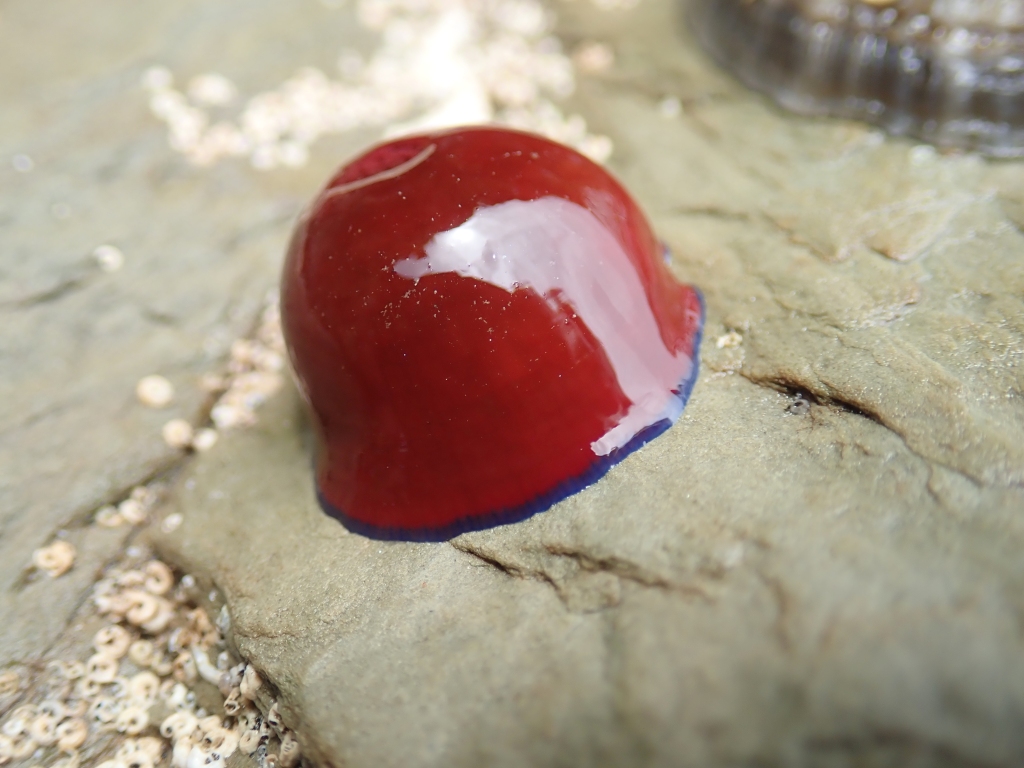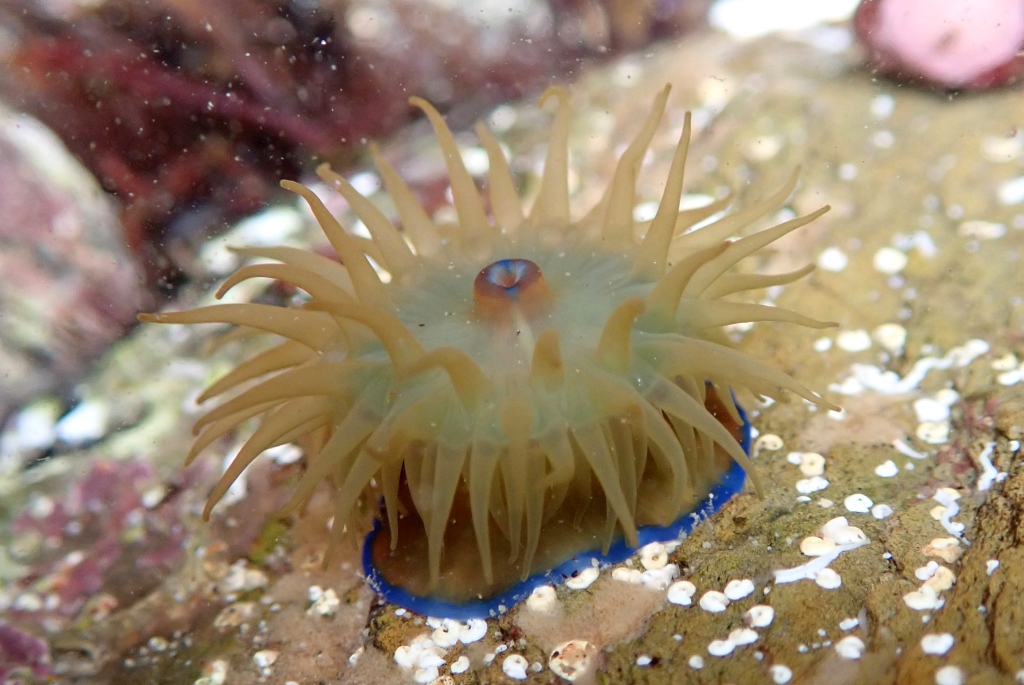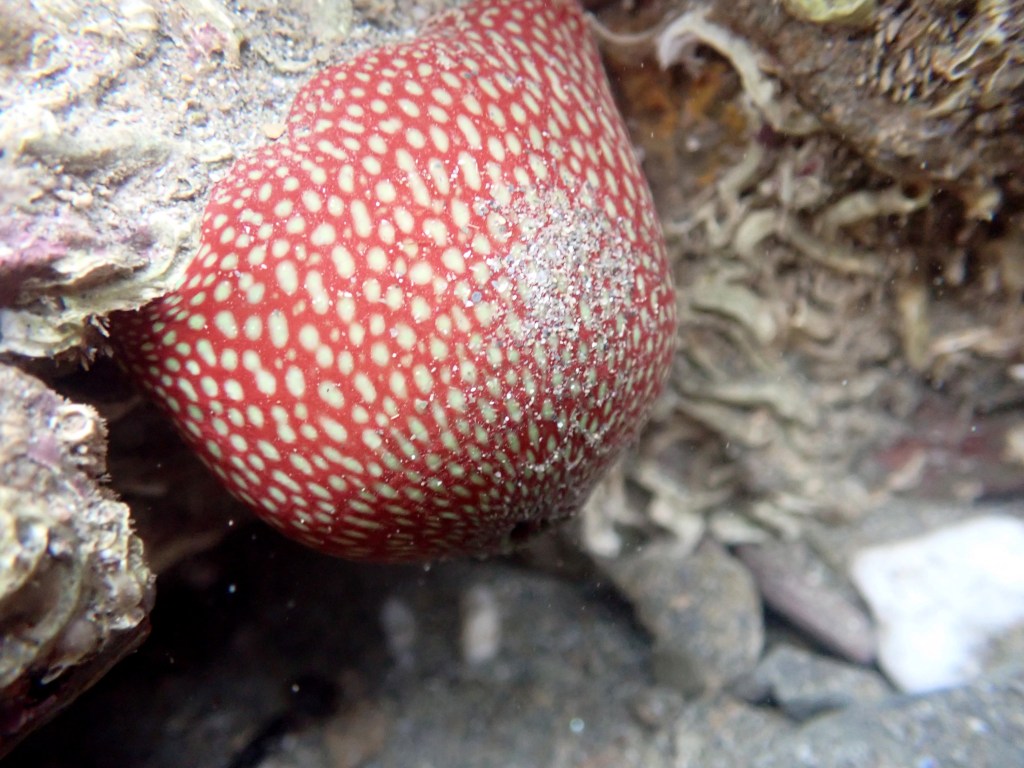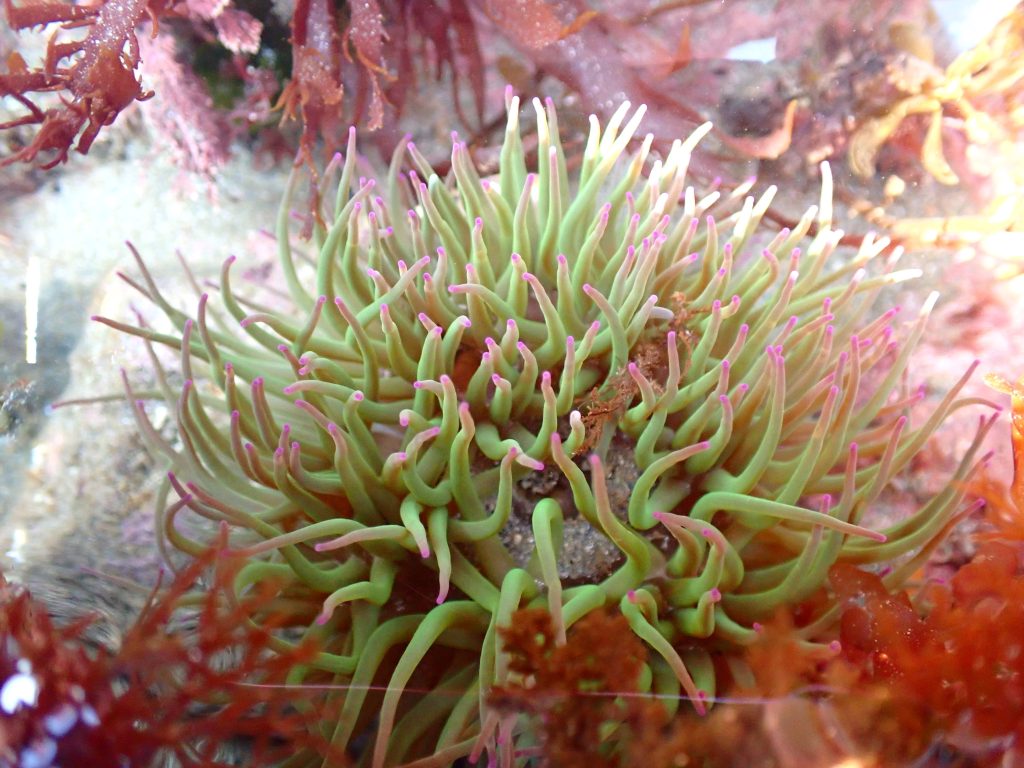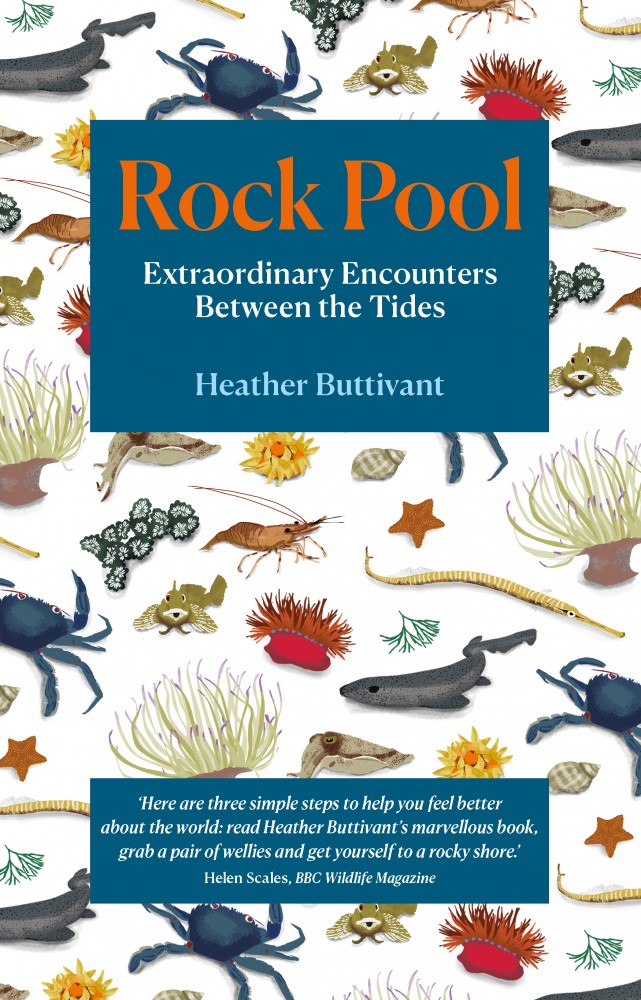Red, green, pink, blue… anemones are amazing! If you’re new to rock pooling in the UK, you might not know that colourful anemones thrive in our waters.
There are lots of beautiful species of anemone to discover and if you follow this simple guide, you’ll soon be able to identify the most common ones.
Anemones are marine animals from the cnidarian family. This means that they have stinging cells and are closely related to jellyfish, corals and hydroids. All anemones have jelly-like bodies and use their tentacles to paralyse and catch their prey. Many anemones sucker themselves onto rocks or seaweed, although some like to hide in the sand or mud.
Please be aware that anemones are delicate and easily damaged so never try to detach them or use nets, which can hurt them. Try not to touch the stinging tentacles and always wash your hands before touching your eyes.
Ready to identify your anemone? Answer these questions…
1. Is your anemone one colour – a shade of red, orange or green?
It may have all of its tentacles hidden so it looks like a jelly sweet, or be open with a fringe of medium-length tentacles that are the same colour as the column. You may be able to see a blue line around the base or blue blobs around the edge.
This is a beadlet anemone.
Young beadlet anemones sometimes have yellow stripes on the column, adults are all one colour.
Not like this? Go to Q2.
2. Is your anemone’s column (body) red with yellow spots.
This anemone looks like a beadlet except for having yellow spots all over the column.
This is a strawberry anemone.
Not your anemone? No problem. Go to question 3.
3. Does your anemone have very long, wavy tentacles that do not fully retract? It can be buff brown or green with purple tips.
This is a snakelocks anemone.
Something different? Go to question 4.
4. Does your anemone have white lines up its column and a warty appearance? If it is open, does it have zebra-stripe tentacles and pink spots on its mouth.
This is a gem anemone.
Not like this? Go to question 5.


5. Look closely. Does the column have lots of pieces of stones and shells stuck to it? If open are the tentacles sturdy and hollow-looking?
The tentacles of this anemone are banded with colour. The colours vary.
This is a dahlia anemone.
Something different? Go to question 6.


6. Is the anemone fringed with a huge number of short tentacles?
This anemone also varies in colour and can be red, brown, grey or blue, with mottling and specks of colour. The tentacles are arranged in many overlapping layers rather like daisy petals. The anemone will close up very fast if disturbed, folding in on itself.
This is a daisy anemone.
Found something different?
Anemones can vary in appearance and there are plenty of species that aren’t shown here. Take a look at some other possibilities below and contact me if you would like help with identifying your finds.

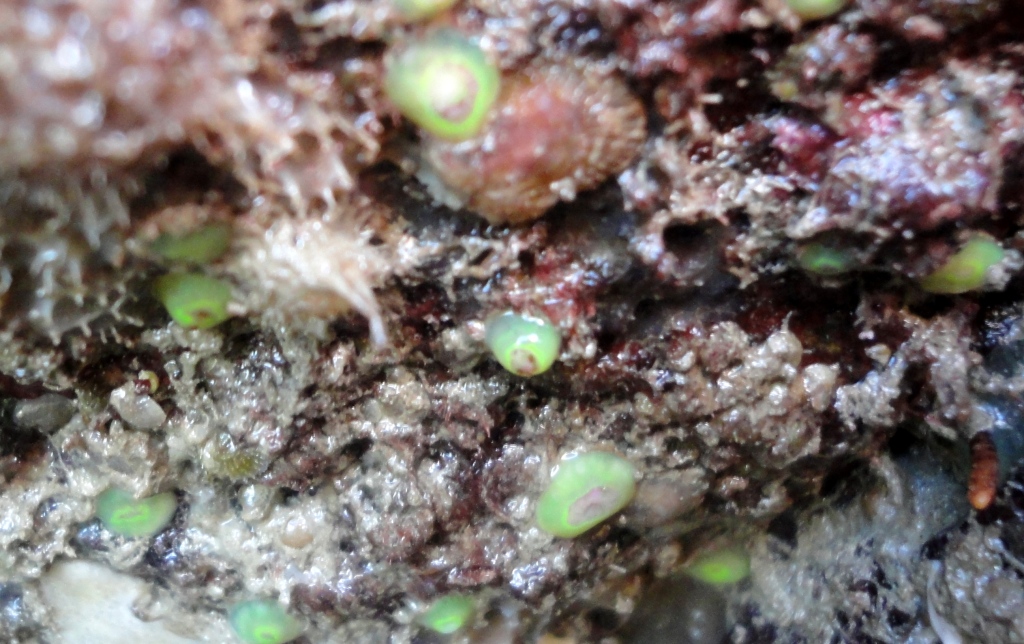
Have you found other wildlife in your rock pool? Check out my guides to identifying common crabs, fish, starfish and seashells.
Discover the secret world of anemones and other rock pool creatures with my book Rock Pool: Extraordinary Encounters Between the Tides.
Have your own beach adventures and see the underwater world as never before with my hands-on children’s activity book, Beach Explorer: 50 Things to See and Discover.
This website is a labour of much love and the content is available for free to everyone. My wonderful readers often ask if there is a way to support my work. You can now ‘buy me a coffee’ through my Ko-fi.uk page. (Just click donate and you can set the amount to pay by PayPal). Thank you!


